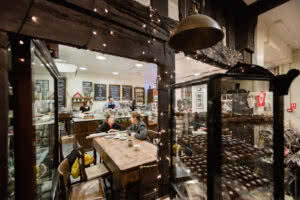In-person events are a core part of the offering for magazines like gal-dem – a new media organisation committed to sharing stories and experiences of female-identifying and non-binary people of colour. But how does that work during lockdown? We sat down for a chat with gal-dem’s soon-to-be CEO, Mariel Richards, to find out more about how online events may play a role in the future of magazine publishing.
Bring offline events into the digital world
Launched in 2015, gal-dem began as a student-run, voluntary project intended to shake up the mostly white (and mostly male) media industry. Four years later, the business was formalised, with a structured schedule and teams based in an office. Although gal-dem is mainly a digital magazine – a print edition is only released once a year – much of the magazine’s work happens in-person. As well as producing content, gal-dem is renowned for its events, which include everything from art gallery takeovers and alcohol-free parties to networking dinners and roundtable discussions. When lockdown hit, the team knew they had to be flexible – and started to make a move to online events.
Tailor virtual publishing industry events to your audience
One of this year’s biggest digital publishing trends has been moving in-person events online. And with so many events going virtual, it’s important to keep things fresh, exciting, and tailored to your audience. For gal-dem, that means thinking carefully about which platform to use. ‘The last thing we want is for people to think “Urgh, not another Zoom!'” says Richards. She believes the reason their online events have been so successful is that they maintain the vibe that gal-dem’s in-person events are known for.
As far as Richards is concerned, maintaining the gal-dem culture is the key to success. “I said that it’s easy to run an online event, and it is. But there’s still work that needs to go in to set the culture, set an atmosphere, and to set a feeling. And what’s great is that we’ve proven that you’re still able to do that digitally.”
But how do they do it? Like many things, it’s all about passion and know-how. “When you have people who know the event concept and audience inside out – like Alysha [gal-dem’s partnership manager] does – then they can present and curate a space that feels just as warm, intimate, and inclusive as it would in-person.”
Online magazine publishing events can increase your reach
By going virtual, gal-dem has been able to expand its audience. As Richards explains: “Typically, the vast majority of our events would either be in London or in Bristol. Because we’ve been able to do things digitally, we’ve been able to engage with our community outside of those core cities.” Because gal-dem’s now able to reach a wider audience – and not just in the UK – the team has noticed a much higher attendance rate. For example, a recent series of roundtables had 700 subscribers, while in-person versions would have had between one and two hundred attendees.
Richards goes on to add just how unprecedented this is: “At the start of this year, in no way would Alysha and I have said we’re going to do a series of three roundtables. (That) the biggest and best influencers are going to come through and offer advice and we’re going to welcome 700-800 people to listen to it. We would have been terrified!” This larger reach has practical implications, too. Because gal-dem events include a discount code for membership, the increase in reach has translated into more subscribers.
A trusted platform can help magazines going digital
gal-dem has also grown its event audiences by advertising on our platform. Rather than only attracting people who are familiar with the magazine, by using our services to post their events, they can also reach people who are interested in similar topics. Richards says they’ve noticed this in their analytics. A healthy amount of sales and registrations are coming from our channels when compared to direct purchases.
Richards also notes that people’s familiarity with the Eventbrite brand has made things easier, especially in a year where people have already had to adapt to so much. “There’s enough ‘new’ this year. There’s too much that’s new!” she says. By using a well-known ticket sales platform, customers already know what they’re doing. People know how to purchase tickets, get in touch with creators, and find all of the details of the upcoming event.
Virtual magazine publishing events are more accessible
For small magazine publishers like gal-dem, hosting events online makes things far easier – and less costly. As Richards says, “Putting on a massive talk for hundreds and hundreds of people is quite an intimidating prospect if you’re new to event planning.” But in the context of online events, she explains, “You don’t have that same barrier to entry in terms of having to deal with all of the physical costs and difficulties of running an event in-person.”
For gal-dem, accessibility is super important– and with physical events, it can be quite tricky. “It’s hard to find venues in London that will provide the accessibility requirements that we demand, within the budget that we’re working with as a small organisation,” says Richards. By moving online, gal-dem has more control. Attendees don’t have to worry about staircases and bathroom labelling, and closed captioning comes as standard. Creators can also record events for those who, for whatever reason, have registered but can’t make it along on the day.
Are online events the future of the publishing industry?
So much is in flux this year that it’s hard to say what the next decade will bring for the magazine industry. One thing is clear: online events have a lot of far-reaching benefits that will last well beyond the pandemic. If you’re ready to take your magazine publishing events online, find out how we can help





